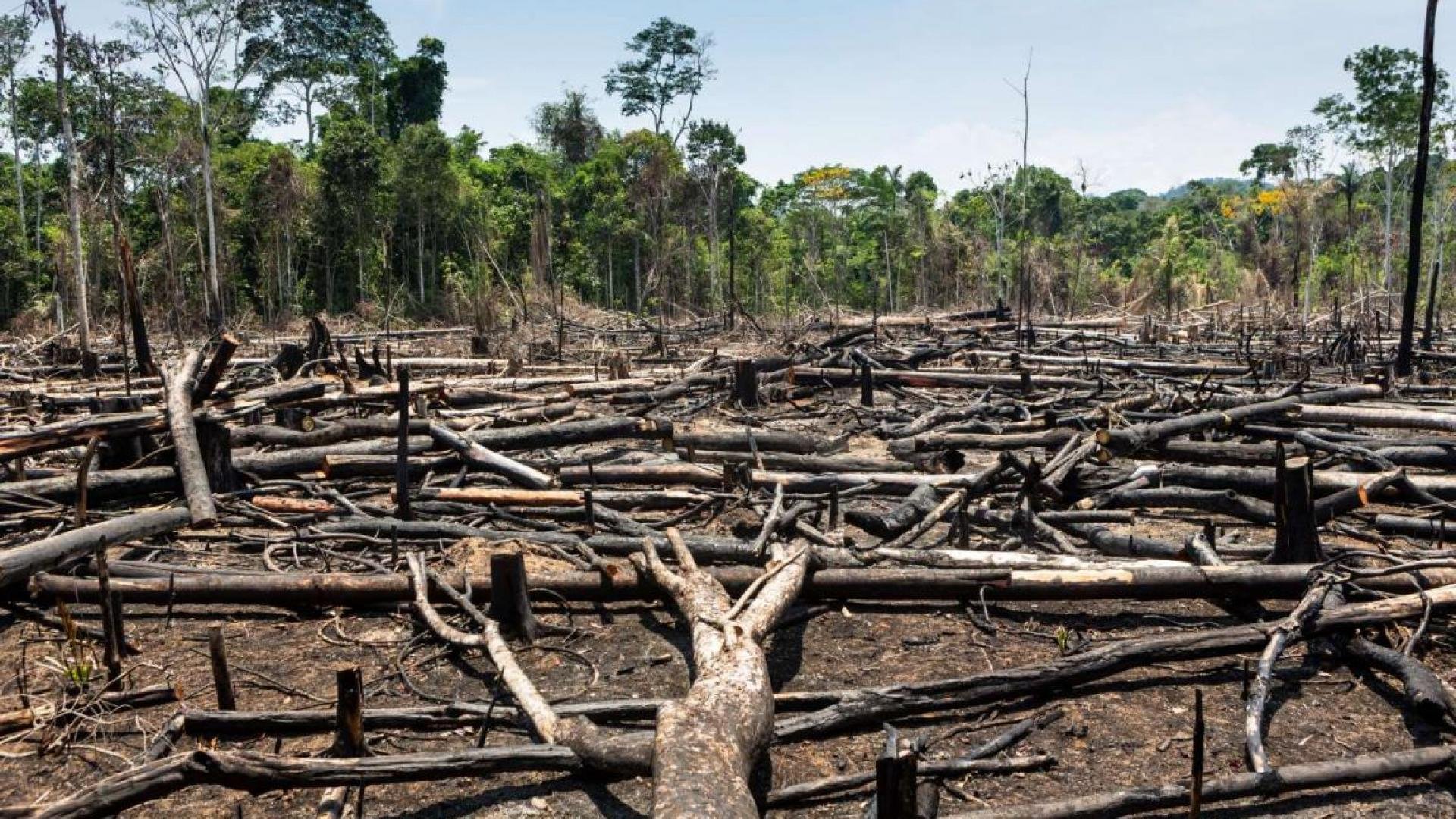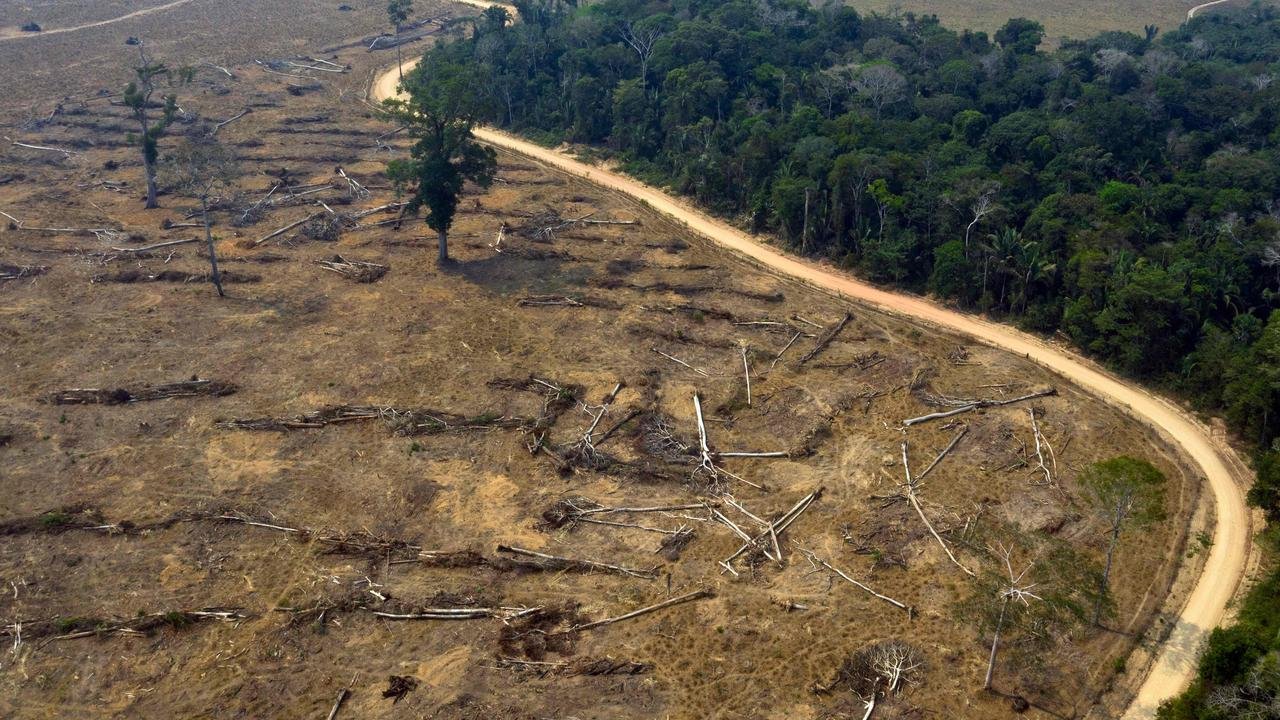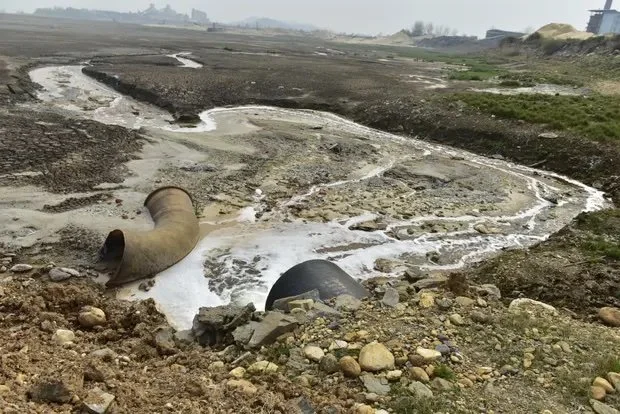Issues in cellulosic material supply chains
Cellulose materials made from wood pulp are too often tied to old-growth forest destruction.
Before we get into it, what are cellulose materials, and how does wood become fabric?
Cellulose fibres can be found in wood pulp and in other woody plant stalks such as bamboo. In order for wood to be transformed into a cellulosic material, wood is first chipped into small pieces, before being ‘cooked’ under high pressure with substances such as sodium hydroxide and sulphide liquor. At this point, the wood is in a pulp form.
Wood pulp is then dissolved with amine oxide, leaving only a sticky, viscous liquid called raw cellulose. This cellulose is moved through a spinneret which produces a fibre that can be spun into yarn and woven into fabric.
We’ll get back to this process, but first, we need to talk about trees.

About 300 million trees are logged each year to be transformed into cellulose fabrics like viscose, rayon, modal, and lyocell.
If these trees were placed end-to-end, they’d circle the planet seven times over.
It’s critical we protect the world’s forests from fashion-related destruction
-

30% of viscose and rayon is made from endangered and ancient forests
According to Canopy, a not-for-profit dedicated to protecting forests from being destroyed for fashion, old-growth forests are being cut down in many fashion supply chains.
Cellulose materials should never be made from old-growth, biodiverse forests, but instead, from trees planted specifically for production – on land that is not deforested for this purpose. -

Protecting forests is critical to efforts to curb the climate crisis
Rainforest Trust states that by protecting a single acre of forest from destruction, as much as 400 metric tons of carbon equivalent emissions remain stored, rather than being released into the atmosphere, exacerbating global warming.
Forests are like the ‘lungs of the Earth’, as trees don’t only store carbon in them, but clean the air we all breathe.
-

Forest destruction for fashion contributes to species endangerment
Canopy also states that just 20% of ancient forests remain in intact tracts large enough to maintain critical biological diversity.
Deforestation is a major global issue, and habitat destruction is the primary cause of species extinction worldwide. While the leading driver of this destruction is not cellulose material production, the harms caused by these materials are significant.
Indonesian forests are some of the most at risk
Regions across Brazil, the Boreal forest of Canada, and Indonesia are particularly harmed by cellulose material driven deforestation.
In 2020, Indonesia lost about 115,000 hectares of forest cover which was home to an array of native animals and plants. Local not-for-profits have expressed major concerns about the use of unsustainable cellulose fabrics. This deforestation harms local and Indigenous communities.
In Indonesia, species including sumatran tigers, orangutans, javan rhinoceros’ and sumatran elephants are all endangered due to this habitat destruction. It is important to remember not only the serious danger of extinction for these species, but the suffering these individual animals face when they lose their habitat and food sources, and ultimately die.
Photo: David Gilbert via Rainforest Action Network
The chemical processing of wood pulp and bamboo into viscose and rayon is highly polluting
The substances used to process wood pulp into a useable fashion fibre can be very harmful, especially if released into the air and waterways surrounding production facilities. An investigation across China, India and Indonesia found facilities producing viscose to be causing severe environmental damage such as water pollution from untreated and contaminated water. A number of major brands were tied to these facilities.
Human health risks including skins conditions, cancer, coronary heart disease and even birth defects have also been tied to a toxin used in conventional viscose production, impacting workers and their communities.
Image: Wastewater coming our of a viscose production facility in China // Changing Markets Foundation
While uncertified, conventional cellulose materials are tied to serious dangers, sustainable cellulose materials exist.
Canopy releases a ranking for producers of cellulose materials, sharing which are most sustainable, transparent and traceable. They work with hundreds of brands committed to sourcing forest-friendly materials.
One highly rated producer is Lenzing, which creates Ecovero, as well as a partly recycled cellulose material, and Tencel.
Tencel is a kind of lyocell material which is produced with safer chemical substances, in a closed-loop system which recovers, recycles and reuses over 99% of the solvents and water used in the production process transforming wood chips into cellulose. This nearly completely eliminates water contamination risks.
Tencel also exclusively produces their lyocell and modal fabrics from Forest Stewardship Certified and other certified sources, which ensure wood comes from trees planted for production, grown on land which was not deforested for use.
Lyocell materials like Tencel are extremely land efficient
It’s important to remember that all materials have strengths and weaknesses, but that we must choose those which are as sustainable as possible. While uncertified cellulose materials cause habitat destruction, Tencel lyocell is extremely land efficient, requiring far less land to produce the same amount of material, when compared to wool, and to a lesser degree, cotton.
Want to keep learning?
-

How leather supply chains are tied to deforestation
Most people interested in fashion and sustainability have heard the industry claims that leather is the more sustainable option as it is ‘natural’. However, global leather supply chains are responsible for the destruction of the natural world, including through deforestation.
-

Material guide
Looking to learn more about which fashion materials are best, and which are worth avoiding? Our material guide take a total ethics approach to fashion, where people, animals and the planet and considered and respected.
-

Deforestation and biodiversity loss
Cellulose materials are not the only major deforestation risk in the fashion industry. The production of inefficient materials like leather and wool are also tied to habitat destruction and biodiversity loss.








